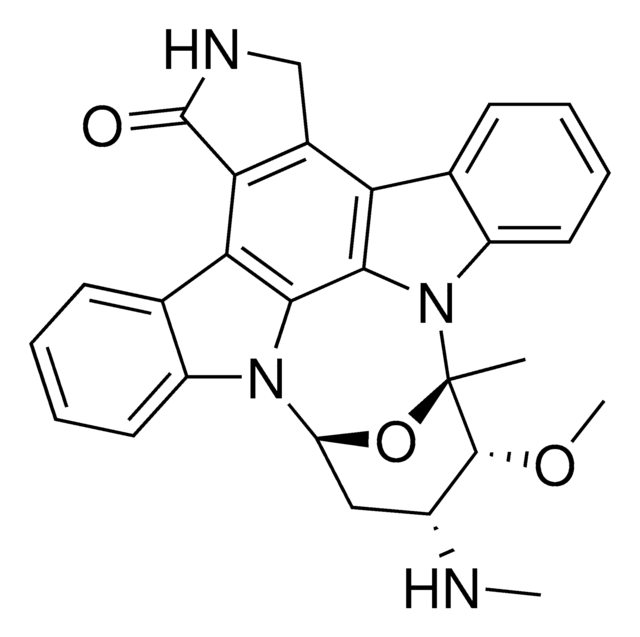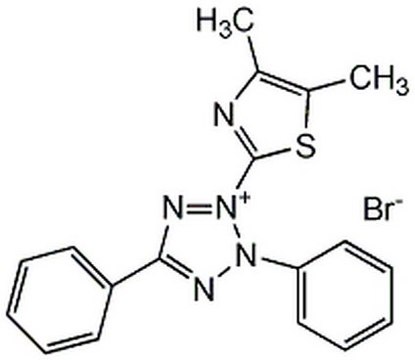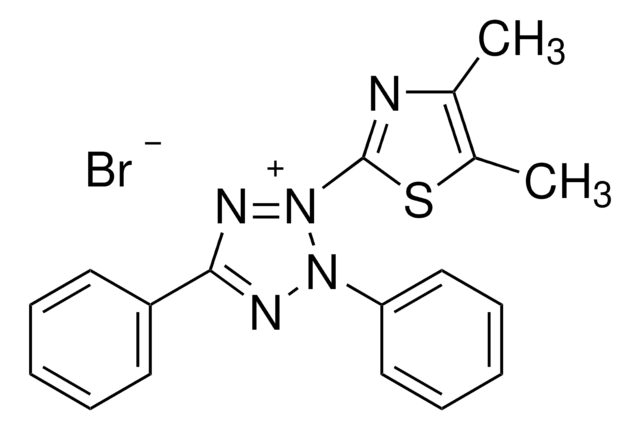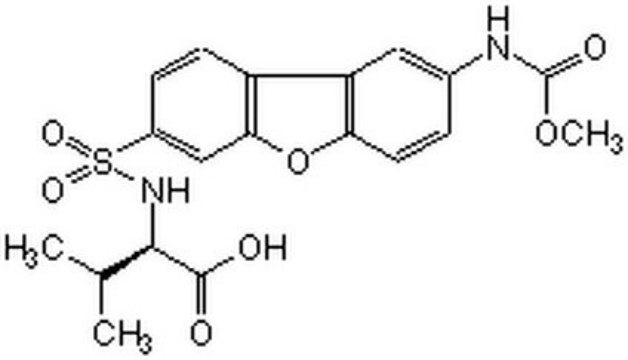476300
Myriocin, Mycelia sterilia
A potent immunosuppressant.
Synonym(s):
Myriocin, Mycelia sterilia, ISP-1, Thermozymocidin, [2S,3R,4R]-(E)-2-Amino-3,4-dihydroxy-2-[hydroxymethyl]-14-oxo-6-eicosenoic Acid
About This Item
Recommended Products
Quality Level
description
RTECS - JX3890000
Assay
≥95% (TLC)
form
solid
manufacturer/tradename
Calbiochem®
storage condition
OK to freeze
color
white
solubility
DMSO: 25 mg/mL
shipped in
ambient
storage temp.
−20°C
SMILES string
N[C@]([C@@H](O)[C@H](O)C\C=C\CCCCCCC(=O)CCCCCC)(CO)C(=O)O
InChI
1S/C21H39NO6/c1-2-3-4-10-13-17(24)14-11-8-6-5-7-9-12-15-18(25)19(26)21(22,16-23)20(27)28/h9,12,18-19,23,25-26H,2-8,10-11,13-16,22H2,1H3,(H,27,28)/b12-9+/t18-,19+,21+/m1/s1
InChI key
ZZIKIHCNFWXKDY-GNTQXERDSA-N
General description
Biochem/physiol Actions
Serine palmitoyltransferase
Warning
Reconstitution
Other Notes
Chen, J.K., et al. 1999. Chem. Biol. 6, 221.
Hidari, K.I.P.J., et al. 1996. J. Biol. Chem. 271, 14636.
Nakamura, S., et al. 1996. J. Biol. Chem. 271, 1255.
Mikaye, Y., et al. 1995. Biochem. Biophys. Res. Commun. 211, 396.
Fujita, T., et al. 1994. J. Antibiot. 47, 208.
Legal Information
Signal Word
Danger
Hazard Statements
Precautionary Statements
Hazard Classifications
Acute Tox. 3 Oral
Storage Class Code
6.1C - Combustible acute toxic Cat.3 / toxic compounds or compounds which causing chronic effects
WGK
WGK 3
Flash Point(F)
Not applicable
Flash Point(C)
Not applicable
Certificates of Analysis (COA)
Search for Certificates of Analysis (COA) by entering the products Lot/Batch Number. Lot and Batch Numbers can be found on a product’s label following the words ‘Lot’ or ‘Batch’.
Already Own This Product?
Find documentation for the products that you have recently purchased in the Document Library.
Our team of scientists has experience in all areas of research including Life Science, Material Science, Chemical Synthesis, Chromatography, Analytical and many others.
Contact Technical Service





